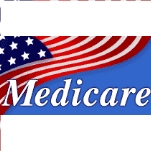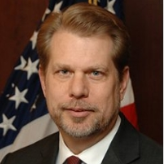(PDF)
(PDF)
Kaiser factsheet on FY 2009 budget (PDF)
(Public Citizen)
‘
Rethinking Medicare Reform’ Needs Rethinking: Reformers cannot ignore marketplace realities in their quest for solutions to Medicare’s nagging problems(by Henry J. Aaron and Robert D. Reischauer, Health Affairs) (PDF)
(by Andrea Louise Campbell and Kimberly Morgan, American Political Science Association) (PDF)
- Table of Contents
- Overview
- History
- What it Does
- Where Does the Money Go
- Controversies
- Suggested Reforms
- Comments
- Leave a comment


A New Mexico native, Kerry Weems was appointed Acting Administrator of the Centers for Medicare and Medicaid Services in September 2007. Weems has bachelor’s degrees in business administration and philosophy from New Mexico State University, and a Master of Business Administration degree from the University of New Mexico.
- Latest News
- D.C. Public Schools will Teach all Second-Graders to Ride a Bike
- New Rule in Germany Limits Sales of Sex-Themed E-Books to 10pm to 6am
- What Happened to the 6-Year-Old Tibetan Boy the Chinese Government Kidnapped 20 Years Ago?
- U.S. Ambassador to Turkey Photoshops his Hair Color to Mock Turkish Mayor
- Mystery Artist Calls Attention to Unfixed Potholes by Drawing Penises around Them
(PDF)
(PDF)
Kaiser factsheet on FY 2009 budget (PDF)
(Public Citizen)
‘
Rethinking Medicare Reform’ Needs Rethinking: Reformers cannot ignore marketplace realities in their quest for solutions to Medicare’s nagging problems(by Henry J. Aaron and Robert D. Reischauer, Health Affairs) (PDF)
(by Andrea Louise Campbell and Kimberly Morgan, American Political Science Association) (PDF)
Comments


A New Mexico native, Kerry Weems was appointed Acting Administrator of the Centers for Medicare and Medicaid Services in September 2007. Weems has bachelor’s degrees in business administration and philosophy from New Mexico State University, and a Master of Business Administration degree from the University of New Mexico.
- Latest News
- D.C. Public Schools will Teach all Second-Graders to Ride a Bike
- New Rule in Germany Limits Sales of Sex-Themed E-Books to 10pm to 6am
- What Happened to the 6-Year-Old Tibetan Boy the Chinese Government Kidnapped 20 Years Ago?
- U.S. Ambassador to Turkey Photoshops his Hair Color to Mock Turkish Mayor
- Mystery Artist Calls Attention to Unfixed Potholes by Drawing Penises around Them





Comments